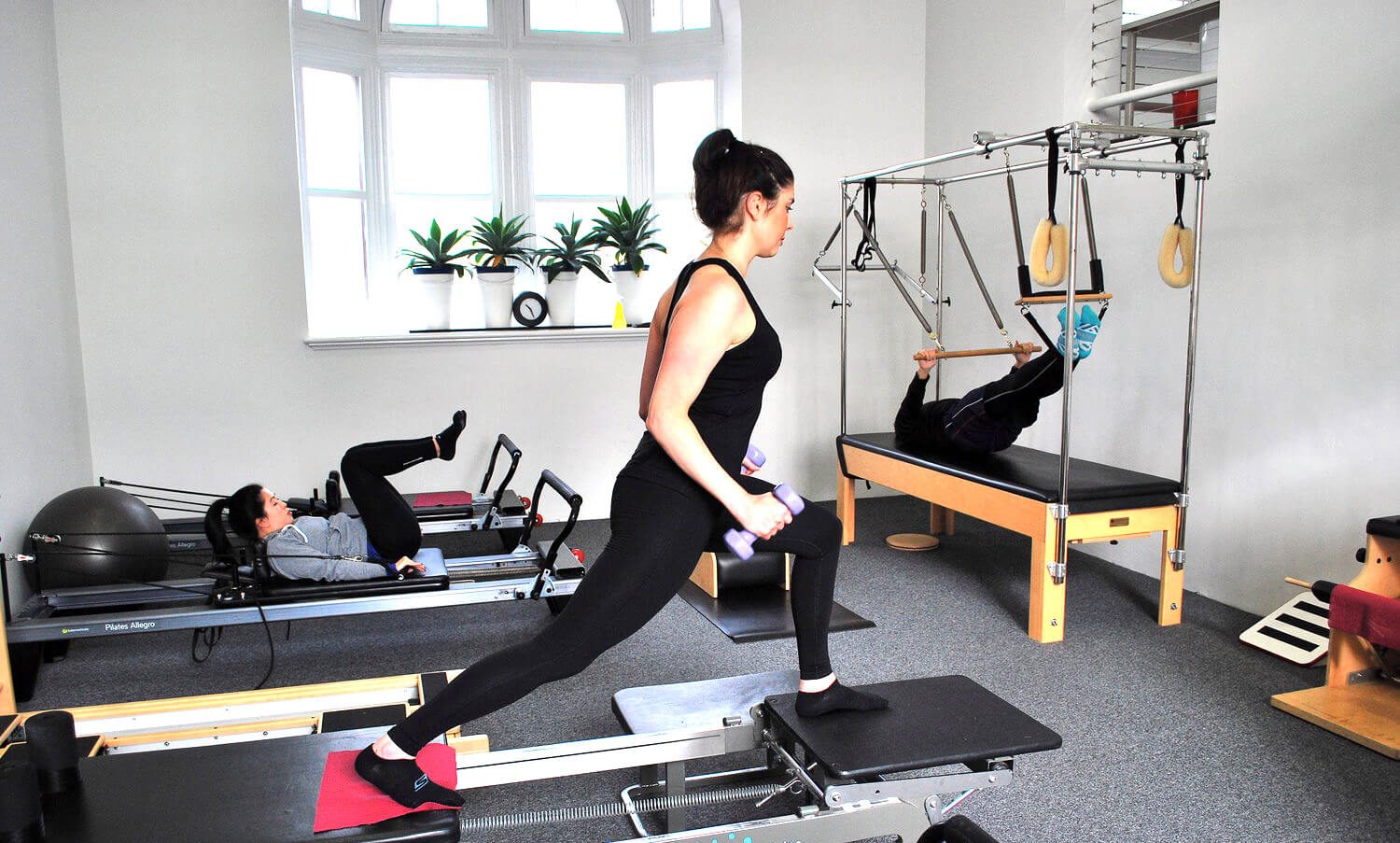Pilates is a form of exercise which originated in Germany in the early 20th century.
Since then its popularity has grown and it has been adapted into several other forms of exercise.
It focuses on slow, controlled movements with a large focus on breathing, spinal alignment and core activation.
“Pilates develops the body uniformly, corrects wrong posture, restores physical vitality, invigorating the mind and elevating the spirit”
– Joseph Pilates
Pilates can be used for:
- Injury rehabilitation including sports
- Injury prevention
- General strength and fitness
- Improve posture
- Improve balance
- Lower back and neck pain
- Hip and knee injuries
Pilates is directed at training the core muscles to correct muscle imbalance (weakness, overactivity and activation issues), promote correct movement patterns and improve muscular control.
Lack of these can lead to:
- Poor posture
- Neck and lower back pain
- Headaches
- Tendon and other repetitive strain injuries
- Sports injuries
- Chronic pain
Why should I choose Pilates?
Over the years, physiotherapists have developed on the building blocks of the traditional Pilates methods and developed Pilates.
Pilates are classes which are run by a specialist physiotherapist who tailors the program directly to your specific needs.
Pilates provides good control of the muscles to allow the joints to be held in their optimal positions.
This occurs when both the muscles which mobilise and stabilise work in balance, so that there is minimal wear and tear on the joints, producing smooth and efficient movement.
It requires activation and control of the deep stabilising muscles of the body to provide the optimal functioning of the body.
The deep stabilising muscles include:
- Transverse abdominus
- Diaphragm
- Multifidus
- Pelvic Floor
- Deep neck flexors
- Shoulder retraction muscles
- Gluteal muscles
Co-ordination between the deep stabilising muscles and the superficial muscles = optimal function.
It is well accepted that poor functioning of the deep trunk musculature in everyday activities can lead to low back pain.
Equally; when our deep neck flexors are not functioning correctly it can result in neck pain.
The presence of pain further inhibits the deep stabilising muscles which can only be rectified by the implementation of a core stability program, aimed at re-training these deep trunk muscles.
Pilates at Northern Sports Physio
- Initial 1 on 1 assessment including real time ultrasound
- 1 on 1 or small group classes
- Variety of exercises including mat, reformer, wundachair and trapeze
- Individualised exercise prescription

